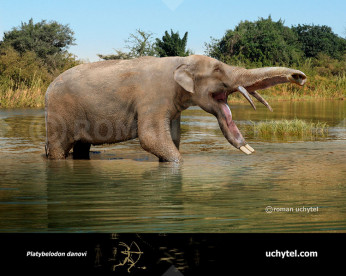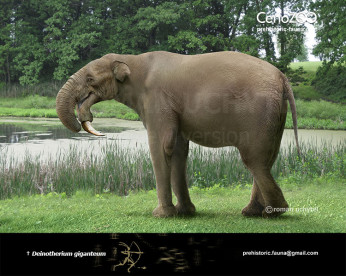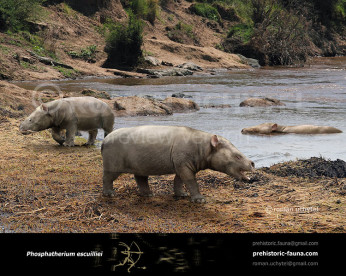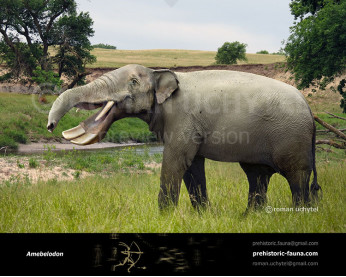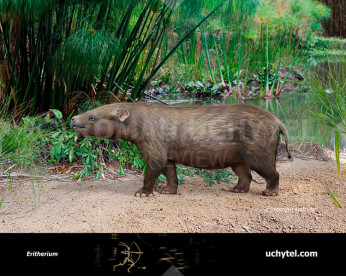Phiomia
395395Phiomia (Phiomia serridens (Andrews & Beadnell, 1902)
Order: Proboscidea
Family: †Phiomiidae
Dimensions: length - 5 m, height - 2,5, weight - 2000 - 3500 kg
Temporal range: during the Late Eocene to Early Oligocene some 37-30 million years ago (Africa)
A typical representative: Phiomia serridens
Phiomia is an extinct genus of basal proboscid that lived in what is now Northern Africa during the Late Eocene to Early Oligocene some 37-30 million years ago. "Phiomia serridens" means "saw-toothed animal of Faiyum". Phiomia was around 2.5 metres high, and vaguely resembled a modern elephant, although, based on the shape of its nasal bones, it had only a very short trunk. It had short tusks on the upper jaw and also short shovel-like tusks on the lower jaw that were most likely used for gathering food. These were similar to those of the Miocene Platybelodon, Archaeobelodon, and Amebelodon, but considerably smaller. The tusks in the upper jaw may have been used in defence, or scraping bark off trees.
Phiomia (Phiomia serridens (Andrews & Beadnell, 1902)
Order: Proboscidea
Family: †Phiomiidae
Dimensions: length - 5 m, height - 2,5, weight - 2000 - 3500 kg
Temporal range: during the Late Eocene to Early Oligocene some 37-30 million years ago (Africa)
A typical representative: Phiomia serridens
Phiomia is an extinct genus of basal proboscid that lived in what is now Northern Africa during the Late Eocene to Early Oligocene some 37-30 million years ago. "Phiomia serridens" means "saw-toothed animal of Faiyum". Phiomia was around 2.5 metres high, and vaguely resembled a modern elephant, although, based on the shape of its nasal bones, it had only a very short trunk. It had short tusks on the upper jaw and also short shovel-like tusks on the lower jaw that were most likely used for gathering food. These were similar to those of the Miocene Platybelodon, Archaeobelodon, and Amebelodon, but considerably smaller. The tusks in the upper jaw may have been used in defence, or scraping bark off trees.

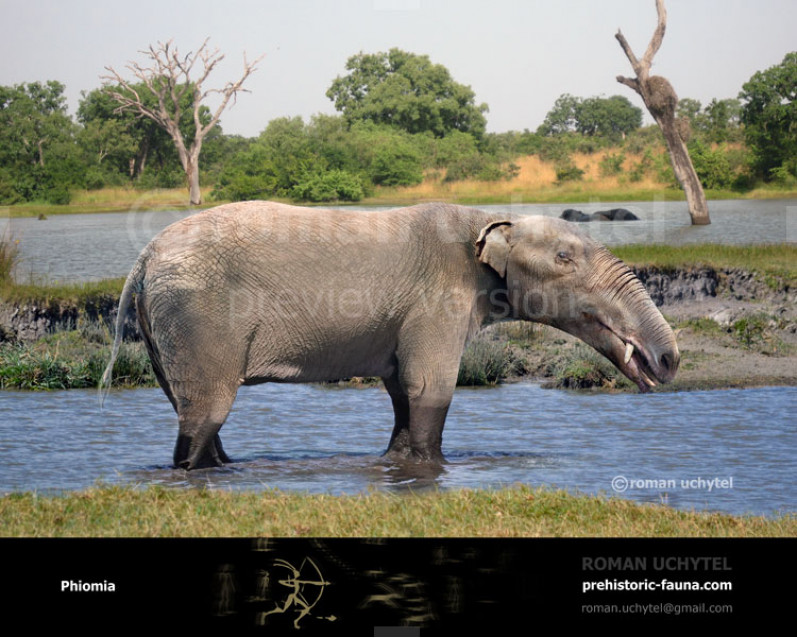
-797x638.jpg)

-70x56.jpg)
